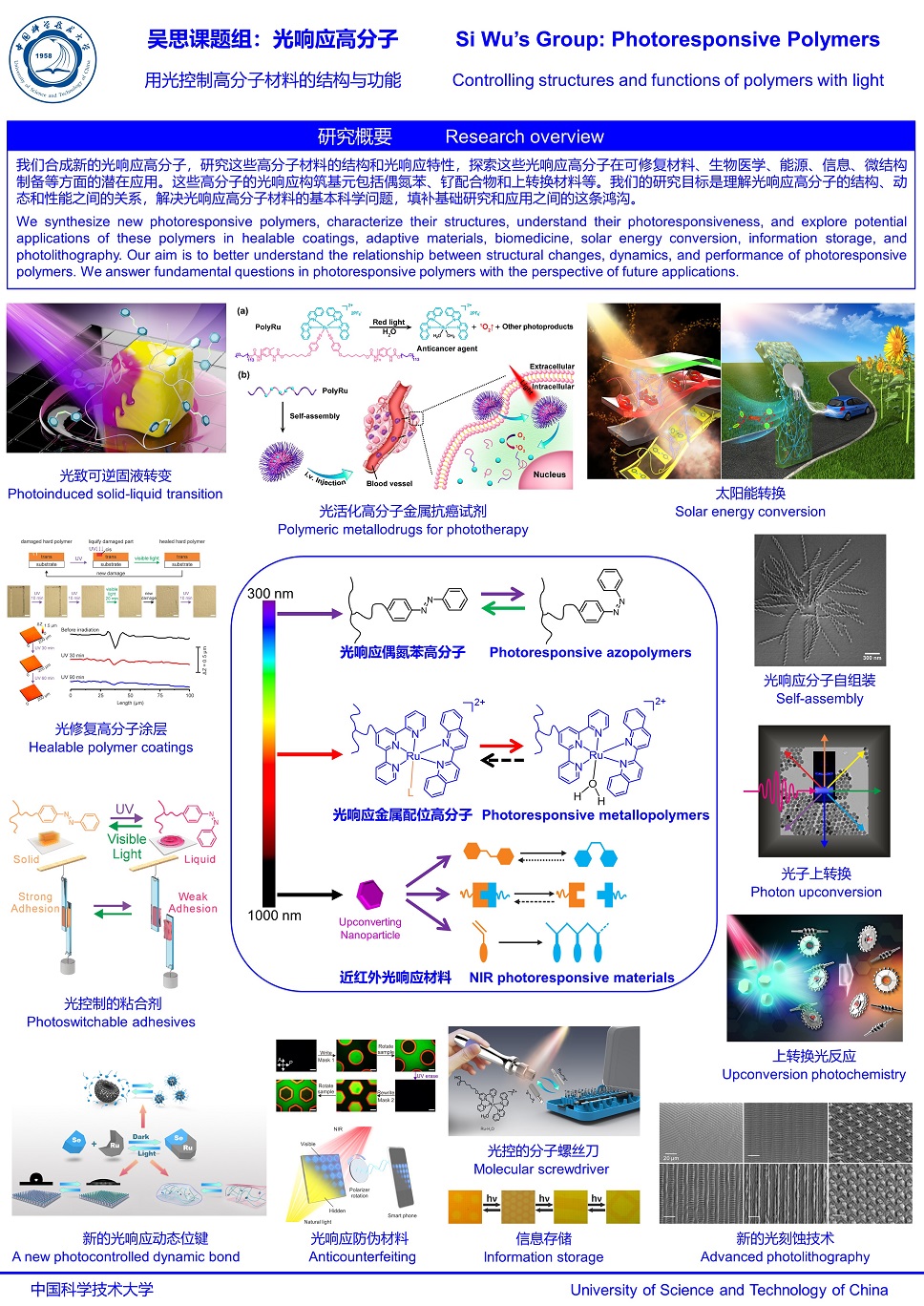Research Topic
Light provides high spatiotemporal resolution to precisely control properties and functions of materials. We synthesize new photoresponsive polymers for healable and reconfigurable materials, biomedical applications, energy storages, and light-guided self-assembly. Our goal is to answer fundamental questions of photoresponsive polymers with the perspective of future applications.

We use photoswitchable azobenzene as building blocks to construct photoresponsive polymers, hydrogels and nanomaterials. We control glass transition temperatures, adhesion, phase transitions, colors, morphologies, etc. with light.
We use Ru complexes that show ligand photosubstitution as building blocks to construct photoresponsive polymers and supramolecules. Photoresponsive ruthenium complexes have some interesting features. First, ruthenium complexes are responsive to visible light. The responsive wavelength can be further red shifted to the NIR region by proper structure design. Second, the responsive coordination bond in Ru complexes can be used to construct reversible and dynamic systems. Third, some ruthenium complexes have anticancer activities, similar to the anticancer metallodrug cisplatin. Fourth, ruthenium complexes are singlet oxygen sensitizers, which are similar to drugs used in photodynamic therapy. These interesting features make ruthenium complexes have many potential applications.
We use upconverting nanoparticles as building blocks to construct near-infrared (NIR) light-responsive materials. We combine upconverting nanoparticles with azopolymers, Ru-containing polymers and other photoresponsive materials. These NIR light-responsive materials are useful for deep-tissue biomedical applications and photoreactions in bulk materials.

 Location:
Location: